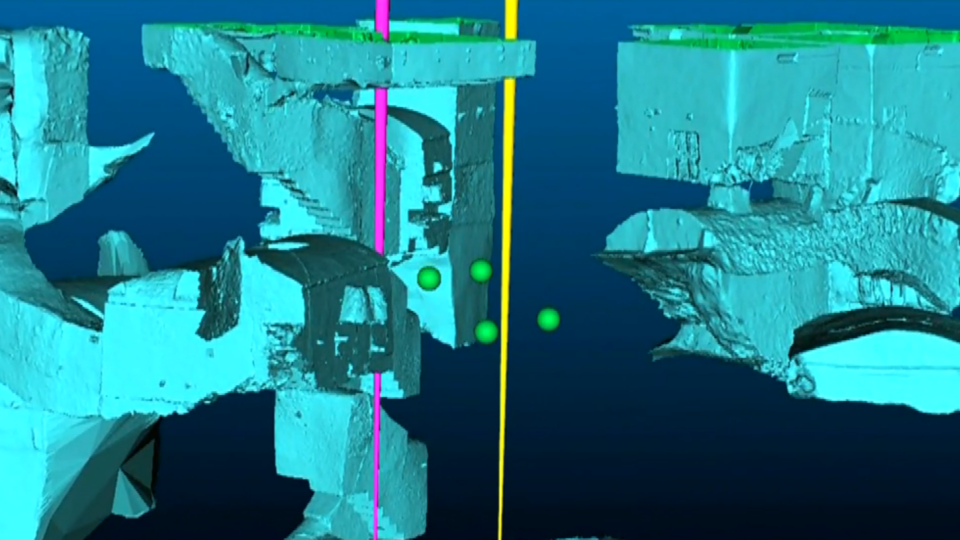Naples, Italy Under honking horns and operatic screams in Naples, Italy's most chaotic city, archaeologist Raffaella Busso descends into the deafening silence of an underground labyrinth, winding back in time nearly 2,300 years.
She says that before the ancient Romans, it was the ancient Greeks who colonized Naples, leaving behind traces of life and death inside the ancient burial chambers.
Point a flashlight at a stone tombstone depicting the legs and feet of those buried inside.
She explains, “There are two people, a man and a woman,” in this one cemetery. “Usually you can find eight or more.”
This cemetery was discovered in 1981 in the old fashioned way by excavation.
Now, archaeologists are collaborating with physicists, replacing their shovels with subatomic particle detectors roughly the size of a household microwave.
Thanks to advanced technology, particle physicists like Valery Tyukov can use it to see hundreds of feet of rock, never mind the apartment building 60 feet above us.
“It's a lot like radiography,” he says, as he places his particle detector next to the damp wall, still decorated with colorful floral murals.
Archaeologists have long suspected that there were additional rooms on the other side of the wall. But just to catch a glimpse, they had to break it.
Thanks to this detector, they now knew for sure, and they didn't even have to use a shovel.
To understand the technology used, Tyukov takes us to his laboratory at the University of Naples, where researchers examine images from this detector.
Specifically, they are looking for muons, cosmic rays left over from the Big Bang.
A muon detector tracks and counts the muons that pass through the structure, and then determines the density of the structure's interior space by tracking the number of muons that pass through it.
In the burial chamber, it captured about 10 million muons in a period of 28 days.
“There's a muon over there,” Tyukov says, pointing to a squiggly line he's magnified using a microscope.
After months of painstaking analysis, Tyukov and his team were able to create a 3D model of this hidden burial chamber, which had been closed to human eyes for centuries, and which has now been opened thanks to particle physics.

What sounds like science fiction is also used A counterpart inside the pyramids in EgyptChambers under volcanoes, and even cancer treatment, says Professor Giovanni De Lellis.
“Especially cancers deep within the body,” he says. “This technology is used to measure potential damage to healthy tissue surrounding the cancer. It is very difficult to predict what breakthrough this technology could actually make in any of these areas, because we have never observed objects with such precision.”
“This is a new era,” he marvels.
Boeing and United Airlines are investigating after a wheel separated from the plane
A United plane veers off the runway and falls onto the grass at Houston Airport

“Alcohol maven. Evil bacon lover. Wannabe social media geek. Travel guru. Amateur introvert. Pop culture nerd.”
